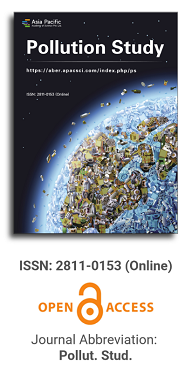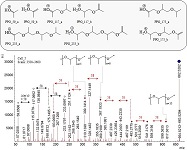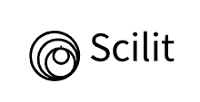
Asia Pacific Academy of Science Pte. Ltd. (APACSCI) specializes in international journal publishing. APACSCI adopts the open access publishing model and provides an important communication bridge for academic groups whose interest fields include engineering, technology, medicine, computer, mathematics, agriculture and forestry, and environment.

The (partial) replacement of synthetic polymers with bioplastics is due to increased production of conventional packaging plastics causing for severe environmental pollution with plastics waste. The bioplastics, however, represent complex mixtures of known and unknown (bio)polymers, fillers, plasticizers, stabilizers, flame retardant, pigments, antioxidants, hydrophobic polymers such as poly(lactic acid), polyethylene, polyesters, glycol, or poly(butylene succinate), and little is known of their chemical safety for both the environment and the human health. Polymerization reactions of bioplastics can produce no intentionally added chemicals to the bulk material, which could be toxic, as well. When polymers are used to food packing, then the latter chemicals could also migrate from the polymer to food. This fact compromises the safety for consumers, as well. The scarce data on chemical safety of bioplastics makes a gap in knowledge of their toxicity to humans and environment. Thus, development of exact analytical protocols for determining chemicals of bioplastics in environmental and food samples as well as packing polymers can only provide warrant for reliable conclusive evidence of their safety for both the human health and the environment. The task is compulsory according to legislation Directives valid to environmental protection, food control, and assessment of the risk to human health. The quantitative and structural determination of analytes is primary research task of analysis of polymers. The methods of mass spectrometry are fruitfully used for these purposes. Methodological development of exact analytical mass spectrometric tools for reliable structural analysis of bioplastics only guarantees their safety, efficacy, and quality to both humans and environment. This study, first, highlights innovative stochastic dynamics equations processing exactly mass spectrometric measurands and, thus, producing exact analyte quantification and 3D molecular and electronic structural analyses. There are determined synthetic polymers such as poly(ethylenglycol), poly(propylene glycol), and polyisoprene as well as biopolymers in bags for foodstuffs made from renewable cellulose and starch, and containing, in total within the 20,416–17,495 chemicals per sample of the composite biopolymers. Advantages of complementary employment in mass spectrometric methods and Fourier transform infrared spectroscopy is highlighted. The study utilizes ultra-high resolution electrospray ionization mass spectrometric and Fourier transform infrared spectroscopic data on biodegradable plastics bags for foodstuffs; high accuracy quantum chemical static methods, molecular dynamics; and chemometrics. There is achieved method performance |r| = 0.99981 determining poly(propylene glycol) in bag for foodstuff containing 20,416 species and using stochastic dynamics mass spectrometric formulas. The results highlight their great capability and applicability to the analytical science as well as relevance to both the fundamental research and to the industry.
Rising tides of contamination from source to sink: The Yamuna’s struggle with pollution (2014–2024)
Vol 6, Issue 2, 2025
Download PDF
Abstract
The Yamuna River, a lifeline for millions in India, has been severely polluted over the decades. From 2014–2024, substantial research has been conducted to analyze the extent of its degradation, pollution sources, and mitigation efforts. This review synthesizes studies from this decade, focusing on chemical, biological, and physical parameters of pollution, industrial and municipal waste contributions, agricultural runoff, and policy interventions. Despite increased awareness and remedial measures, the river remains critically polluted, demanding urgent and sustainable solutions. Also, incomplete data has been collected over the years. The focus of researchers has been primarily on Delhi-NCR regions, mainly because industrial and agricultural activities are more prominent in these regions, neglecting the entire stretch of the River Yamuna which is very important to understand the overall health of the river and to analyze the areas that are contributing mostly to its polluted water.
Keywords
References
- Central Pollution Control Board (CPCB) Report. Yamuna Monitoring Committee. Available online: https://cpcb.nic.in/yamuna-monitoring-committee/ (accessed on 10 December 2024).
- Gopal B, Chauhan M. River Yamuna from Source to Delhi: Human Impacts and Approaches to Conservation. In: Restoring River Yamuna: Concepts, Strategies and Socio-Economic Considerations. National Institute of Ecology, New Delhi; 2007.
- Business Standard. A 22-km long human chain planned on June 4 to draw attention towards Yamuna. Available online: https://www.business-standard.com/india-news/22-km-long-human-chain-planned-on-june-4-to-draw-attention-towards-yamuna-123051300902_1.html (accessed on 10 December 2024).
- Zhang X, Chen P, Han Y, et al. Quantitative analysis of self-purification capacity of non-point source pollutants in watersheds based on SWAT model. Ecological Indicators. 2022; 143: 109425. doi: 10.1016/j.ecolind.2022.109425
- Mishra P, Jain R. Self-Purification of River Betwa. International Journal for Scientific Research and Development. Available online: https://www.ijsrd.com/articles/IJSRDV9I80040.pdf (accessed on 10 December 2024).
- Kumar M, Sharif M, Ahmed S. Impact of urbanization on the river Yamuna basin. International Journal of River Basin Management. 2019; 18(4): 461-475. doi: 10.1080/15715124.2019.1613412
- Bhardwaj R, Gupta A, Garg JK. Evaluation of heavy metal contamination using environmetrics and indexing approach for River Yamuna, Delhi stretch, India. Water Science. 2017; 31(1): 52-66. doi: 10.1016/j.wsj.2017.02.002
- Malik D, Singh S, Thakur, J, Singh RK et al Heavy Metal Pollution of the Yamuna River: An Introspection. International Journal of Current Microbiology and Applied Sciences. 2014.
- Sonone SS, Jadha S, Sankhla MS, Kumar R, et al. Water Contamination by Heavy Metals and their Toxic Effect on Aquaculture and Human Health through Food Chain. Letters in Applied NanoBioScience. 2020; 10(2): 2148-2166. doi: 10.33263/lianbs102.21482166
- Beni R, Guha S, Hawrami S. Drinking Water Disparities in Tennessee: The Origins and Effects of Toxic Heavy Metals. Journal of Geoscience and Environment Protection. 2019; 07(06): 135-146. doi: 10.4236/gep.2019.76012
- Haddad NS, Alasadi SZ, Haddad HH. Contamination of Heavy Metals (Lead, Zinc, Magnesium and Manganese) Concentrations in Human Eyes. American Journal of Analytical Chemistry. 2012; 03(07): 491-494. doi: 10.4236/ajac.2012.37065
- Khan M. Trends of Laboratory-Detected Heavy Metals in Children: Solutions for Heavy Metal Contamination in Infant Food Products. Food and Nutrition Sciences. 2023; 14(09): 791-811. doi: 10.4236/fns.2023.149051
- Sanou A, Méité N, Kouyaté A, et al. Assessing Levels and Health Risks of Fluoride and Heavy Metal Contamination in Drinking Water. Journal of Geoscience and Environment Protection. 2022; 10(11): 15-34. doi: 10.4236/gep.2022.1011002
- Wuana R, Ogbodo C, Itodo AU, et al. Ecological and Human Health Risk Assessment of Toxic Metals in Water, Sediment and Fish from Lower Usuma Dam, Abuja, Nigeria. Journal of Geoscience and Environment Protection. 2020; 08(05): 82-106. doi: 10.4236/gep.2020.85006
- Mandal P, Upadhyay R, Hasan A. Seasonal and spatial variation of Yamuna River water quality in Delhi, India. Environmental Monitoring and Assessment. 2009; 170(1-4): 661-670. doi: 10.1007/s10661-009-1265-2
- Zehra R, Singh SP, Verma J, et al. Spatio-temporal investigation of physico-chemical water quality parameters based on comparative assessment of QUAL 2Kw and WASP model for the upper reaches of Yamuna River stretching from Paonta Sahib, Sirmaur district to Cullackpur, North Delhi districts of North India. Environmental Monitoring and Assessment. 2023; 195(4). doi: 10.1007/s10661-023-11072-5
- Mishra AP, Singh S, Shekhar Sarkar M, et al. Integrating community perceptions, scientific data and geospatial tools for sustainable water quality management. Results in Engineering. 2024; 23: 102563. doi: 10.1016/j.rineng.2024.102563
- Sharma K, Raju NJ, Singh N, Sreekesh S. Heavy metal pollution in groundwater of urban Delhi environs: Pollution indices and health risk assessment. Urban Climate. 2022; 45(10): 101233. doi: 10.1016/j.uclim.2022.101233
- Jaiswal M, Gupta SK, Chabukdhara M, et al. Heavy metal contamination in the complete stretch of Yamuna river: A fuzzy logic approach for comprehensive health risk assessment. PLOS ONE. 2022; 17(8): e0272562. doi: 10.1371/journal.pone.0272562
- Khan R, Saxena A, Shukla S. Evaluation of heavy metal pollution for River Gomti, in parts of Ganga Alluvial Plain, India. SN Applied Sciences. 2020; 2(8). doi: 10.1007/s42452-020-03233-9
- Zehra R, Singh M, Verma J. Heavy Metal Pollution Monitoring of Yamuna from Dak Patthar to Agra. International Journal of Lakes and Rivers. 2020; 13(2): 131. doi: 10.37622/ijlr/13.2.2020.131-148
- Ahmed S, Akhtar N, Rahman A, et al. Evaluating groundwater pollution with emphasizing heavy metal hotspots in an urbanized alluvium watershed of Yamuna River, northern India. Environmental Nanotechnology, Monitoring & Management. 2022; 18: 100744. doi: 10.1016/j.enmm.2022.100744
- Goyal D. Comprehensive assessment of physicochemical parameters of Yamuna River water quality. International Journal of Academic Research and Development. 2024.
- Pal R, Dubey RK, Dubey SK, et al. Assessment of Heavy Metal Pollution through Index Analysis for Yamuna Water in Agra Region, India. International Journal of Current Microbiology and Applied Sciences. 2017; 6(12): 1491-1498. doi: 10.20546/ijcmas.2017.612.166
- Yadav A, Khandegar V. Dataset on assessment of River Yamuna, Delhi, India using indexing approach. Data in Brief. 2019; 22: 1-10. doi: 10.1016/j.dib.2018.11.130
- Tomar D, Upadhyay R. Heavy metals in Yamuna river: A Review. International Journal of Advanced Scientific Research and Management. 2018.
- Sharma M, Rawat S, Kumar D, et al. The state of the Yamuna River: a detailed review of water quality assessment across the entire course in India. Applied Water Science. 2024; 14(8). doi: 10.1007/s13201-024-02227-x
- Said S, Hussain A. Pollution mapping of Yamuna River segment passing through Delhi using high-resolution GeoEye-2 imagery. Applied Water Science. 2019; 9(3). doi: 10.1007/s13201-019-0923-y
- Ministry of Environment, Forest and Climate Change. State of Environment Report 2022. Available online: https://moef.gov.in/annual-reports (accessed on 8 December 2024).
- Järup L. Hazards of heavy metal contamination. British Medical Bulletin. 2003; 68(1): 167-182. doi: 10.1093/bmb/ldg032
- National Capital Region Planning Board (NCRPB). Draft Regional Plan 2041. Available online: https://ncrpb.nic.in/DraftRegionalPlan-2041_English.pdf (accessed on 8 December 2024).
- Reza R, & Singh G. Heavy metal contamination and its indexing approach for river water. International Journal of Environmental Science & Technology. 2010; 7(4), 785-792. doi: 10.1007/BF03326187
- Prasad SC. How Faith and Pollution Collide on Delhi’s Yamuna River. India Water Portal; 2024.
- Down To Earth. New method for efficient removal of heavy metals from water. Available online: https://www.downtoearth.org.in/pollution/new-method-for-efficient-removal-of-heavy-metals-from-water-75980 (accessed on 8 December 2024).
- Central water commission report-2021; toxic metals in river water. Available online: https://www.cwc.gov.in/sites/default/files/trace-toxic-metal-report-dec-2021.pdf (accessed on 8 December 2024).
- Chandra Prasad S. Chhath Puja on Delhi’s Polluted Yamuna: A Tale of Faith and Environmental Neglect Available online: https://www.indiawaterportal.org/people-and-culture/how-faith-and-pollution-collide-on-delhis-yamuna-river (accessed on 8 December 2024).
- Upadhyay R, Dasgupta N, Hasan A, et al. Managing water quality of River Yamuna in NCR Delhi. Physics and Chemistry of the Earth, Parts A/B/C. 2011; 36(9-11): 372-378. doi: 10.1016/j.pce.2010.03.018
- Bui CV, Vo QT. Smart Environmental Monitoring: Leveraging Remote Sensing and Machine Learning for Water Quality Assessment at Da Nang Beaches. In: Proceedings of the 2024 9th International Conference on Applying New Technology in Green Buildings (ATiGB); 2024.
- Ejaz U, Khan SM, Jehangir S, et al. Monitoring the Industrial waste polluted stream-Integrated analytics and machine learning for water quality index assessment. Journal of Cleaner Production. 2024. doi: 10.1016/j.jclepro.2024.141877
- UNEP. How to reduce pollution in Delhi’s waterways. Available online: https://www.unep.org/news-and-stories/story/how-reduce-pollution-delhis-waterways-study (accessed on 8 December 2024).
Supporting Agencies
Copyright (c) 2025 Author(s)
License URL: https://creativecommons.org/licenses/by/4.0/

This site is licensed under a Creative Commons Attribution 4.0 International License (CC BY 4.0).
.jpg)
Beijing University of Technology, China



